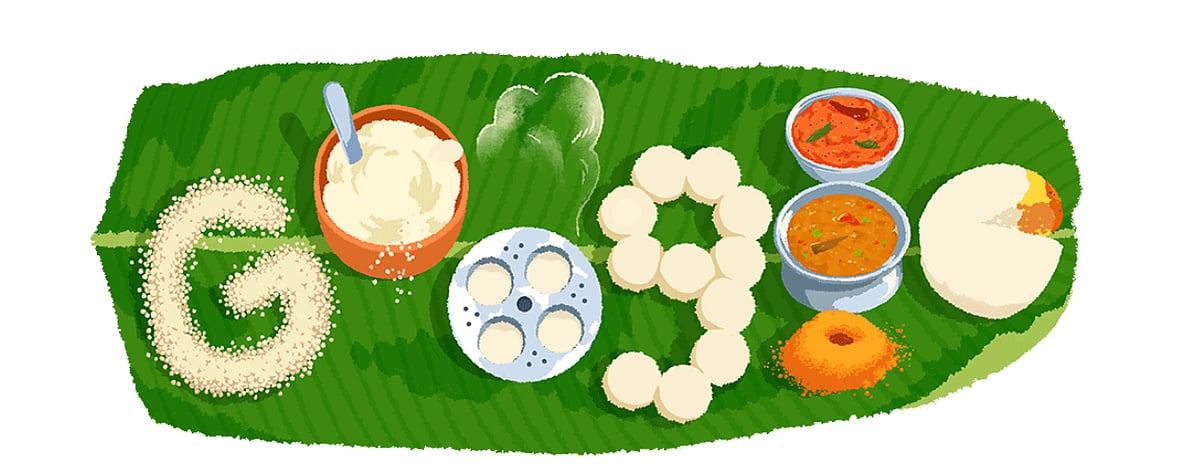Why Google Doodle Is Celebrating Idli On Oct 11
The Google Doodle on Idli marks a cultural tribute rather than an anniversary-linked observance.

Google is celebrating the iconic South Indian dish idli with a special Doodle on October 11, 2025, to honour its rich cultural and culinary legacy across India and beyond.
The Doodle, which creatively transforms the Google logo into idlies, batter bowls, and chutneys laid out on a traditional banana leaf, brings global attention to a breakfast favourite cherished by millions.
Google wrote, "Today's Doodle celebrates idli, a savoury, steamed South Indian cake made from a fermented batter of rice and urad dal."
The doodle, published on Google’s official Doodles portal, marks a cultural tribute rather than an anniversary-linked observance.
The playful artwork spotlights every stage of making idli – from rice grains and batter, to steaming the soft, fluffy cakes and serving them with classic accompaniments like coconut chutney and sambar. Each detail is crafted, capturing not just the dish’s appeal but also the traditions of South Indian hospitality, with the banana leaf symbolising purity and respect for food.

Main Idli Google Doodle
Why October 11?
While March 30 is officially marked as World Idli Day, there is no particular festival or anniversary associated with October 11. Instead, Google often launches Doodles to celebrate the culinary and cultural significance of dishes that unite people of all backgrounds.
The 2025 Doodle is intended as an independent tribute to idli’s status as a nutritious, vegan, and gluten-free superfood that transcends regions, generations, and national borders.
Idli’s simplicity, health benefits, and universal comfort have helped it win fans from Chennai to New York. Its preparation involves the time-honoured process of soaking, fermenting, and steaming.
Google’s tribute, thus, is not just about celebrating a dish, but also about highlighting India’s rich food heritage for the world to savour

Google Doodle
How To Make Idli
Making traditional idli requires planning, as the batter needs to be prepared a day in advance through a three-step process: soaking, grinding, and fermenting.
Soaking: Rice and de-husked black lentils (urad dal), along with a few fenugreek seeds, are soaked in water for several hours or overnight.
Grinding: The soaked rice and lentils are ground into a smooth, thick batter.
Fermenting: The batter is left to ferment. This process introduces beneficial bacteria that leaven the batter and produce a mild, tangy flavour.
Steaming: The fermented batter is poured into greased, multi-tiered idli molds and steamed for about 10–15 minutes until the cakes are cooked and fluffy.
Idli is typically served hot and is paired with a variety of side dishes.
Sambar: A vegetable and lentil stew flavored with tamarind and spices.
Coconut Chutney: A paste made from fresh coconut, green chilies and tempered with mustard seeds, oil and curry leaves.
Idli Podi: A dry, spicy lentil powder that is mixed with ghee or sesame oil.

